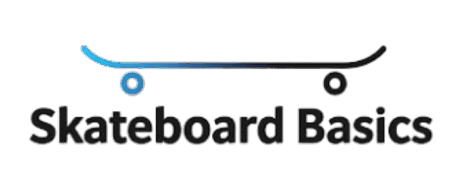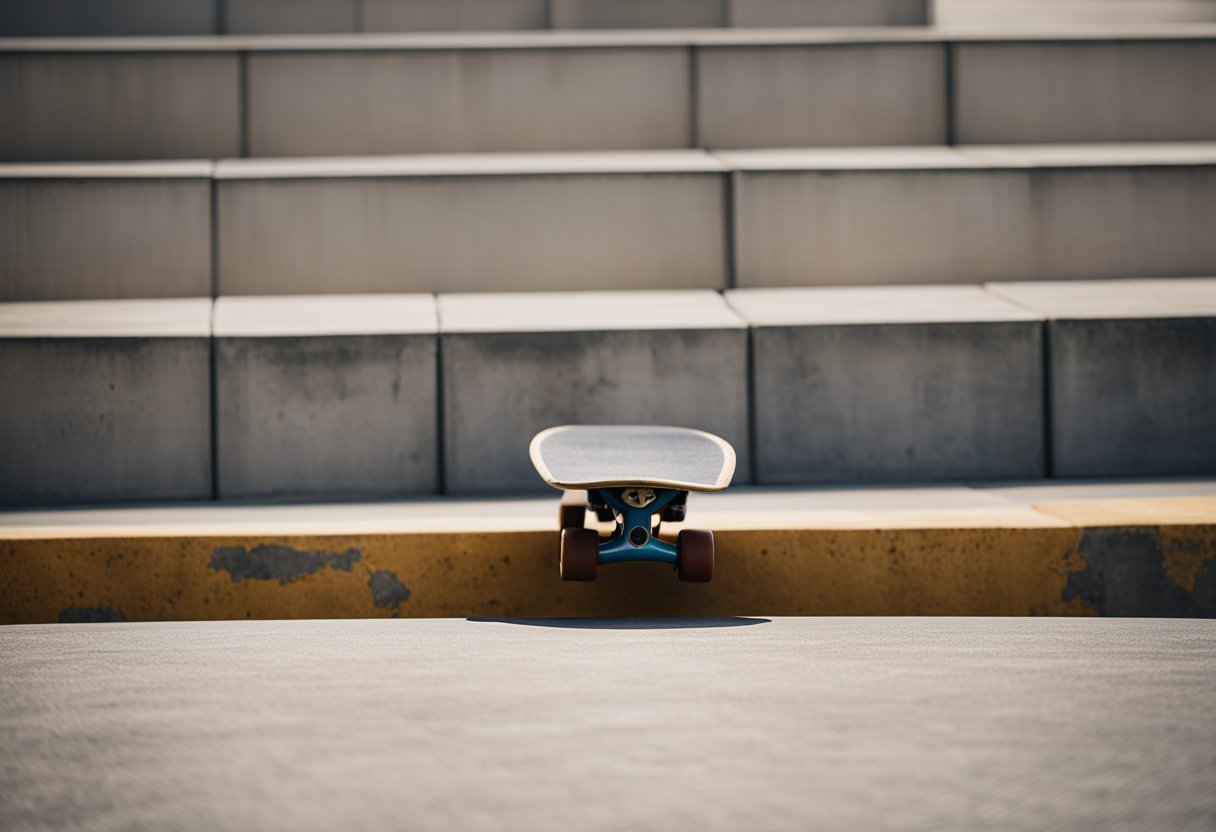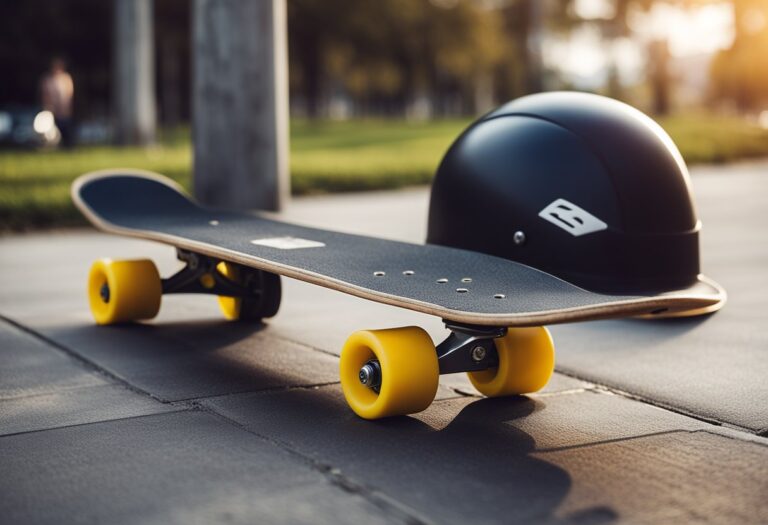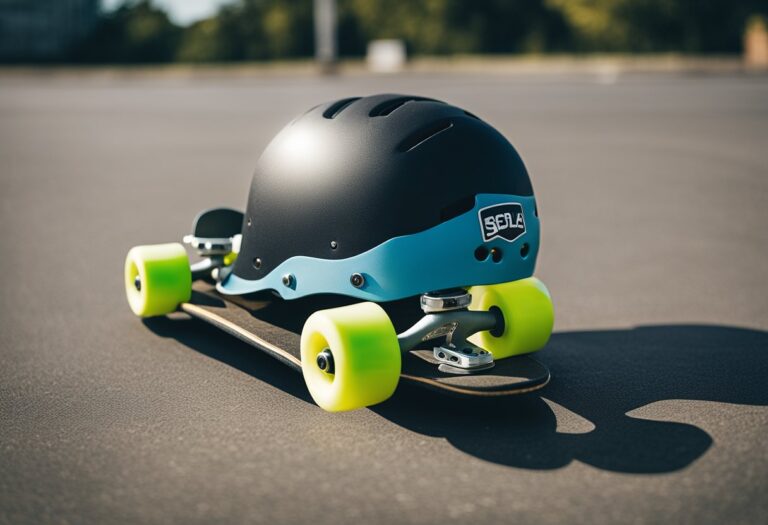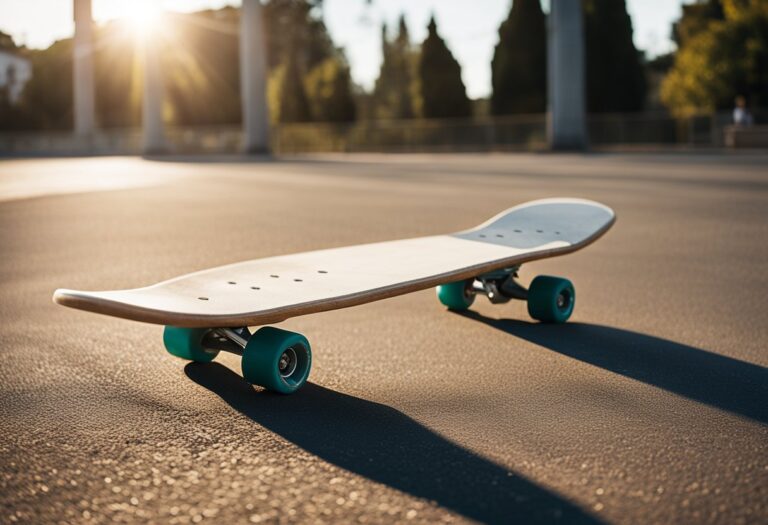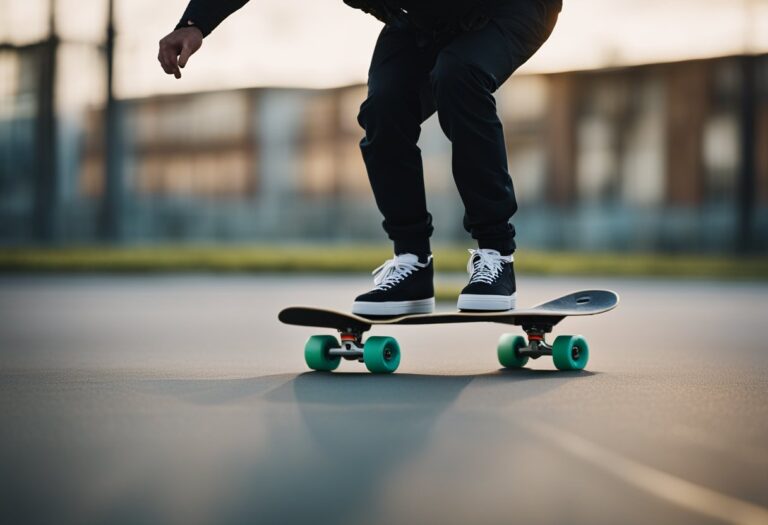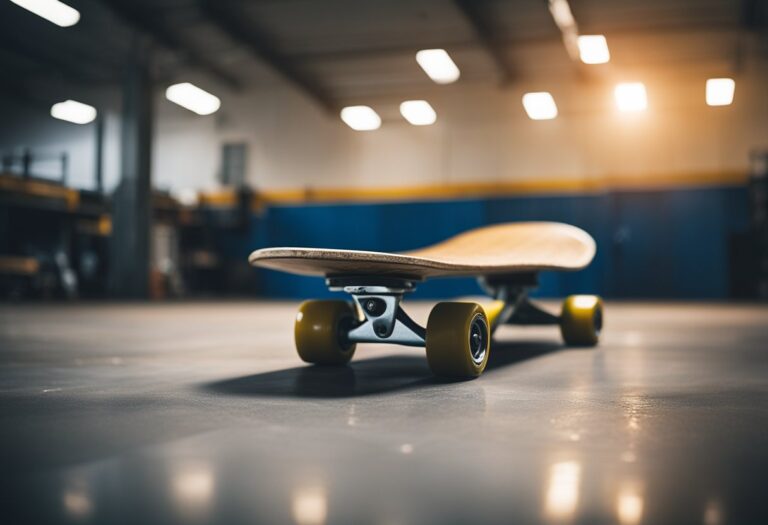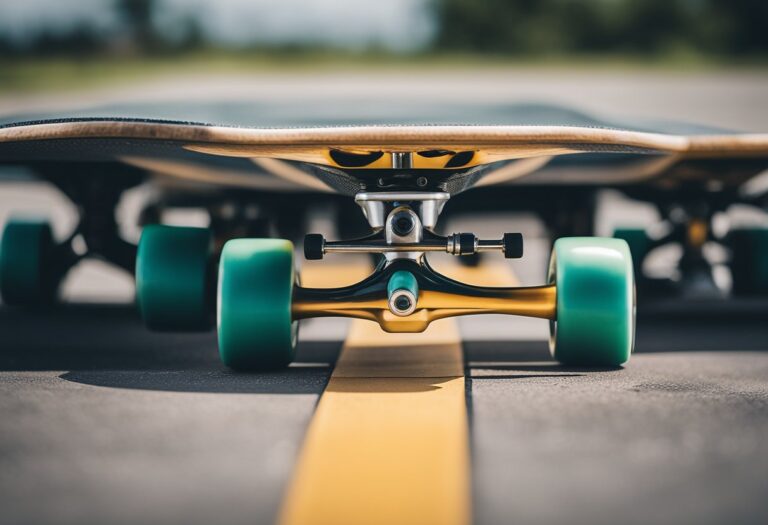How to Skate as a Beginner: Techniques to Get You Rolling
Skateboarding is a fun and exciting activity that can be enjoyed by people of all ages. However, for beginners, it can be a bit intimidating to get started. Learning how to skate requires patience, practice, and dedication. In this article, we will guide you through the basics of skateboarding and provide you with tips and tricks to help you get started on your skating journey.

Getting started with skateboarding can be a bit overwhelming, but it’s important to start with the basics. First, it’s essential to have the right gear. This includes a skateboard, proper shoes, and protective gear such as a helmet, knee pads, and elbow pads. Once you have the right gear, it’s time to start practicing the basic techniques.
Learning the basic techniques of skateboarding is crucial for beginners. These include pushing, turning, and stopping. It’s also important to master balance, which is essential for performing more advanced moves. Once you have a good grasp of the basics, you can move on to practicing key moves and progressing your skills. With dedication and practice, you’ll be able to skate like a pro in no time.
Key Takeaways
- Start with the basics and make sure you have the right gear.
- Practice the basic techniques, including pushing, turning, and stopping.
- Master balance and progress your skills with dedication and practice.
Getting Started

Skateboarding is a fun and exciting activity that can be enjoyed by people of all ages. However, if you’re new to skateboarding, it can be a bit overwhelming to know where to begin. This section will provide you with some essential tips to help you get started.
Choosing the Right Skateboard
The first step in learning how to skateboard is to choose the right board. There are many different types of skateboards available, and it’s important to choose one that suits your needs and skill level. Here are some things to consider when choosing a skateboard:
- Size: Skateboards come in various sizes, so it’s important to choose one that is appropriate for your height and weight. A general rule of thumb is that the board should be about as tall as your waist.
- Deck: The deck is the main part of the skateboard, and it’s important to choose one that is sturdy and durable. The deck should also be wide enough to provide stability while riding.
- Trucks: The trucks are the metal parts that attach the wheels to the deck. It’s important to choose trucks that are the right size for your board and provide the right amount of turning ability.
- Wheels: Skateboard wheels come in different sizes and hardness levels. Softer wheels are better for cruising, while harder wheels are better for tricks and jumps.
Safety Gear Essentials
Skateboarding can be a dangerous sport, so it’s essential to wear the right safety gear to protect yourself from injury. Here are some safety gear essentials:
- Helmet: A helmet is the most important piece of safety gear for skateboarding. It should fit snugly on your head and be certified by a safety organization.
- Pads: Knee and elbow pads are also important for protecting your joints from injury.
- Shoes: It’s important to wear shoes that provide good grip and support for your feet. Avoid wearing sandals or flip flops while skateboarding.
By following these tips, you’ll be well on your way to becoming a confident skateboarder. Remember to always practice in a safe and controlled environment, and have fun!
Basic Skateboarding Techniques

Finding Your Stance
The first step in learning how to skate is finding your stance. This means determining whether you are regular-footed (left foot forward) or goofy-footed (right foot forward). To do so, stand with your feet together and have someone gently push you from behind. Whichever foot you step forward with to catch yourself is your front foot. Once you have determined your stance, practice standing on your board with your front foot over the front trucks and your back foot on the tail.
Pushing Off and Stopping
Pushing off is the next step in learning how to skate. To push off, place your back foot on the ground and push backward while lifting your front foot onto the board. Once you gain some speed, you will need to learn how to stop. The easiest way for beginners to stop is by dragging their back foot on the ground. This is called a foot brake. To do a foot brake, simply lift your front foot off the board and drag your back foot on the ground until you come to a stop.
Turning and Carving
Once you have mastered pushing off and stopping, you can start learning how to turn and carve. To turn, shift your weight onto your front foot and lean in the direction you want to go. To carve, make a sweeping motion with your body while turning. This will allow you to make wider turns and feel more comfortable on your board. Remember to keep your knees bent and your weight centered over your board to maintain balance while turning and carving.
Mastering Balance

Standing on the Skateboard
As a beginner, mastering balance is crucial to prevent falls and injuries while skating. The first step to mastering balance is to stand on the skateboard in a comfortable and stable position. The feet should be shoulder-width apart, with toes pointing slightly outward. The knees should be bent and the weight should be evenly distributed over both feet. It is important to keep the head up and the arms out for balance.
Shifting Weight for Maneuvers
Shifting weight is essential for performing maneuvers while skating. To turn left, the skater should shift their weight to the left foot, while keeping the right foot still. To turn right, the skater should shift their weight to the right foot, while keeping the left foot still. To stop, the skater should shift their weight to the back foot, while pressing down on the tail of the skateboard. It is important to practice shifting weight in a safe and controlled environment, such as a skatepark or an empty parking lot.
By mastering balance and shifting weight, a beginner skater can improve their skills and confidence on the skateboard. Remember to always wear proper safety gear, such as a helmet, knee pads, and elbow pads, and to practice in a safe and controlled environment.
Practicing Key Moves

Once a beginner has mastered the basic stance and balance on a skateboard, it’s time to start practicing some key moves. The following subsections will cover three fundamental moves that every beginner should learn: the Ollie, the Manual, and the Kickturn.
The Ollie
The Ollie is one of the most important moves in skateboarding, as it allows the rider to jump over obstacles and perform tricks. To perform an Ollie, the rider needs to pop the tail of the board while jumping and sliding their front foot up towards the nose of the board. This will cause the board to level out in the air before landing back on the ground.
To practice the Ollie, beginners should start by practicing the motions without actually jumping. They should focus on popping the tail and sliding their front foot up the board. Once they have the motion down, they can start practicing the jump and landing.
The Manual
The Manual is another important move that involves balancing on the back wheels of the skateboard while rolling forward. To perform a Manual, the rider needs to shift their weight towards the back of the board and lift the front wheels off the ground.
To practice the Manual, beginners should start by finding a flat and smooth surface to roll on. They should then try to lift the front wheels off the ground and balance on the back wheels for as long as possible. Once they have mastered the balance, they can start trying to roll while maintaining the Manual.
The Kickturn
The Kickturn is a basic turn that involves lifting the front wheels of the skateboard and pivoting the board on the back wheels. To perform a Kickturn, the rider needs to shift their weight towards the back of the board and use their front foot to lift the front wheels off the ground. They can then pivot the board by turning their shoulders and hips in the desired direction.
To practice the Kickturn, beginners should start by finding a flat and smooth surface to roll on. They should then try to lift the front wheels off the ground and pivot the board in a small circle. Once they have mastered the basic turn, they can start trying to turn in different directions and at higher speeds.
By practicing these key moves, beginners can start to develop their skills and progress towards more advanced tricks and maneuvers. It’s important to remember to always wear proper safety gear and practice in a safe and controlled environment.
Skatepark Etiquette

Understanding Skatepark Rules
Before heading to the skatepark, it’s important for beginners to familiarize themselves with the skatepark rules. Most skateparks have specific rules and regulations that need to be followed in order to ensure everyone’s safety and enjoyment. These rules can include things like wearing proper safety gear, avoiding reckless behavior, and not damaging the park’s property.
To understand the rules of the skatepark, beginners can start by checking the park’s website or asking park staff for a copy of the rules. It’s important to read and understand the rules before entering the park, as breaking these rules can result in serious injury or even legal consequences.
Respecting Other Skaters
Respecting other skaters is a crucial aspect of skatepark etiquette. As a beginner, it’s important to be aware of your surroundings and to avoid getting in the way of other skaters. When waiting for your turn, it’s important to stay out of the way and not block any obstacles or ramps.
Additionally, beginners should avoid cutting in line or hogging the skatepark’s features. It’s important to take turns and share the park with other skaters. If someone falls or needs help, it’s important to offer assistance and make sure they’re okay.
By following the skatepark rules and respecting other skaters, beginners can ensure a safe and enjoyable experience at the skatepark.
Maintenance and Upkeep

Cleaning Your Skateboard
Keeping your skateboard clean is important for maintaining its longevity and performance. Dirt and debris can accumulate on the bearings, causing them to slow down or even seize up. To clean your skateboard, follow these steps:
- Remove the trucks and wheels from the deck.
- Use a soft-bristled brush to gently scrub the deck, trucks, and wheels.
- Use a damp cloth to wipe down the deck and trucks.
- Dry everything off with a clean towel.
- Reassemble your skateboard.
It’s important to not use harsh chemicals or abrasive materials when cleaning your skateboard, as this can damage the deck or trucks.
Replacing Skateboard Parts
As a beginner skater, it’s important to regularly check your skateboard for any signs of wear and tear. If any parts are damaged or worn out, they should be replaced immediately to avoid any accidents or injuries.
Here are some common parts that may need to be replaced:
- Wheels: If your wheels are worn down or cracked, they should be replaced. Look for wheels that are the same size and durometer as your current wheels.
- Bearings: If your bearings are dirty or damaged, they should be replaced. Look for bearings that are rated ABEC-5 or higher for optimal performance.
- Trucks: If your trucks are bent or cracked, they should be replaced. Look for trucks that are the same size and width as your current trucks.
Replacing skateboard parts can be done at home with the right tools and knowledge. However, if you’re unsure about how to replace a specific part, it’s best to take your skateboard to a professional for assistance.
Progressing Your Skills

Learning New Tricks
As a beginner, it is important to master the basic skating techniques before moving on to more advanced tricks. However, once you have developed a good foundation, you can start learning new tricks to challenge yourself and improve your skills. It is recommended to start with simple tricks such as ollies and kickflips before moving on to more complicated ones.
One effective way to learn new tricks is by watching tutorial videos online or seeking guidance from more experienced skaters. It is also important to practice regularly and not get discouraged if you don’t get it right the first time. Keep trying and you will eventually get the hang of it.
Building Endurance and Confidence
Skating can be physically demanding, especially for beginners who are not used to the movements and balance required. To build endurance, it is important to skate regularly and gradually increase the length and intensity of your sessions.
Building confidence is also crucial for progressing your skills. One way to do this is by setting achievable goals for yourself and celebrating your progress along the way. Another way is to skate with friends who are supportive and encouraging.
Overall, progressing your skills as a beginner skater takes time, patience, and practice. By learning new tricks and building endurance and confidence, you can take your skating to the next level and continue to improve over time.
Frequently Asked Questions

What essential gear do I need to start skateboarding?
To start skateboarding, you will need a skateboard, skateboard shoes, and safety gear such as a helmet, knee pads, and elbow pads. It is important to wear these items to prevent injuries while learning to skateboard.
What are the basic techniques for balancing on a skateboard?
The basic techniques for balancing on a skateboard include standing with your feet shoulder-width apart, keeping your knees slightly bent, and looking straight ahead. It is also important to keep your weight centered over the board and to use your arms for balance.
How can I safely practice roller skating as a beginner?
To safely practice roller skating as a beginner, it is important to wear safety gear such as a helmet, knee pads, and elbow pads. It is also recommended to practice in a flat, open area with no obstacles and to start by practicing basic techniques such as stopping and turning.
What are the first steps to learning how to ice skate?
The first steps to learning how to ice skate include learning how to stand on the ice and how to move forward. It is important to keep your weight centered over the blades and to use your arms for balance. It is also recommended to take lessons from a professional instructor to learn proper techniques.
What tips can help a beginner learn to turn on a skateboard?
To learn to turn on a skateboard, it is important to shift your weight in the direction you want to turn and to use your arms for balance. It is also recommended to practice turning on flat ground before attempting to turn while riding.
How should beginners approach skateboarding to build confidence and skill?
Beginners should approach skateboarding by starting with basic techniques and gradually building up to more advanced tricks. It is also important to practice regularly and to take breaks when feeling tired or frustrated. Building confidence and skill takes time and patience, so it is important to stay motivated and enjoy the process.
